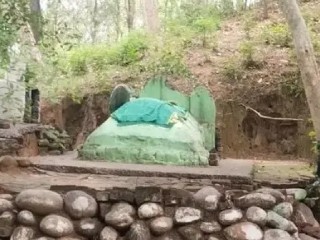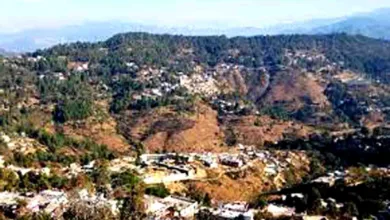GUEST COLUMN : Land grabbing in the name of religious cause

According to a source in the state Waqf board, there are 764 kabristans ,709 mosques, 201 dargahs and mazars registered in the State. However, it is not clear how many of mazars and dargahs are still unregistered . A survey of Waqf properties existing in the State is held in a cycle of twenty-year period. The current survey is still not complete.
 RP NAILWAL
RP NAILWAL
Illegal construction of structures of religious denominations is a matter of debate among the thinking people of Uttarakhand as such intrusion has been going on for ages now. They are asking as to how such a serious matter was allowed to go unnoticed for such a long time until the State government eventually took note of it and asked the departments concerned to demolish all such constructions wherever they exist.
According to some reports, the worst encroachments exist within the State’s sprawling forests where large illegal constructions running into thousands have been noticed by the State government agencies. Earlier in the summer, the State Forest department head and principal chief conservator of forests Vinod Kumar Singhal was directed to tell the divisional forest officers of the 30 forest divisions of the State to take necessary action to remove all kinds of unauthorised structures built on forest land. How many of such illegal constructions have been removed thus far is yet to be disclosed. It is perhaps for the first time that such a drastic action is being taken at any time in the past several decades. This summer chief minister Pushkar Singh Dhami observed in no uncertain terms that some religious constructions, especially dargahs and mazars, have been built over the government lands in the past several years and necessary action would be taken to demolish them. It is worthwhile to mention here that in and around many of the important institutions in the State, particularly in the big towns, such dargahs and mazars exist. Think of any important institution in a city like Dehradun and you have a mazar nearby. Why and how it has been done is not very difficult to understand. Interestingly, such constructions can be found in many important cities and towns of the country. All such dargahs and mazars are under the control of the State Waqf board. In all, some 2,500 such properties are stated to be lying with the State Waqf board and most of them are located in four districts of the State- Dehradun, Hardwar, Udham Singh Nagar and Nainital.
According to a source in the state Waqf board, there are 764 kabristans ,709 mosques, 201 dargahs and mazars registered in the State. However, it is not clear how many of mazars and dargahs are still unregistered . A survey of Waqf properties existing in the State is held in a cycle of twenty-year period. The current survey is still not complete. The central Waqf Act of 1995 and amendment Act of 2013 gave an altogether new dimension to the ownership of the waqf properties. The 1995 Act replaced the earlier one enacted by parliament in 1954. The new Act provided more powers to Waqf boards. Further amendment to the Act in 2013 gave unlimited powers to the Waqf boards to the extent that any Waqf board could even snatch the property of any one. Moreover, in such cases there cannot be any appeal in any court. It is said that thousands of acres of land in the country has been transferred to various Waqf boards. Timely action by the State agencies will help identify the genuine Waqf properties in the State and the mazars and dargahs raised through clandestine means.
(The author is a veteran journalist based in Dehradun. Views expressed are personal)






